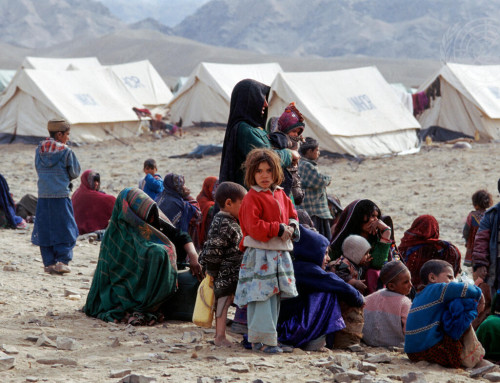In the Syrian Arab Republic, children continue to suffer from the long-term consequences of more than eleven years of conflict. Children’s continued suffering was marked by an increase in grave violations compared to the previous reporting period, a new Secretary-General Report on children and armed conflict in the Syrian Arab Republic shows.
In the context of economic and humanitarian crises, widespread destruction of civilian infrastructure, explosive ordnance contamination and the internal displacement of 3.1 million children, the total number of grave violations against children increased by 10 percent compared to the previous report. A total of 5,219 grave violations against 5,073 children were verified between 1 July 2020 to 30 September 2022, with most violations committed in the north-east and north-west of the Syrian Arab Republic. The actual number is likely to be higher, as the United Nation’s ability to monitor and verify information was limited by access restrictions and insecurity. Armed groups were responsible for 65 percent of grave violations, including factions operating under the umbrella of the opposition Syrian National Army, Hay’at Tahrir al-Sham, the Syrian Democratic Forces and Da’esh. Government and pro-government forces, including air forces and militias were responsible for 13 percent.
“Children in Syria have been trapped in over a decade of war, lacking access to life-saving humanitarian assistance, medical services and education, shattering the future of a generation of children. However, I welcome the significant decrease of attacks on schools and hospitals compared to the previous report. This is a positive development.” said the Special Representative of the Secretary-General for Children and Armed Conflict, Virginia Gamba.
Cases of recruitment and use more than doubled compared to the previous report, with most children being used in combat roles. The already high number of child casualties increased further by 30 percent with explosive ordnance being the leading cause of the killing and maiming of children. Over 10 million Syrians are living in contaminated areas, of which 50 per cent are children, putting them at risk of death and injury.
Children continue to be deprived of liberty due to alleged association with parties to conflict. There is credible reporting, including in the recently published report of the Special Rapporteur on the promotion and protection of human rights and fundamental freedoms while countering terrorism of torture, cruel, inhuman and degrading treatment, harsh confinement conditions, mass forced separation of boys from their mothers, deliberate denial of access to humanitarian relief and limited access to medical treatments and education. Deprivation of liberty should be used as a measure of last resort and for the shortest period of time, in line with international juvenile justice standards and the best interests of the child. She urges all parties and relevant authorities detaining and/or depriving children of their liberty to provide the United Nations and child protection actors with systematic and meaningful access to those children.
“I remain seriously concerned by the humanitarian situation and violence affecting children in Hawl and Rawj camps and other places of detention. I encourage the Syrian Government and the local authorities in the north-east to cooperate and to support coordination between the United Nations and other humanitarian actors to enable the delivery of timely humanitarian assistance. I also reiterate my call upon all concerned countries of origin and relevant authorities inside the Syrian Arab Republic to facilitate and expedite the voluntary repatriation of women and children in line with international law and the best interests of the child.” said the Special Representative.
Maintaining engagement and progress for Children
During the reporting period, the United Nations continued its engagement with the parties to conflict. The United Nations continued engaging with the Government, including through exchanges with the reactivated inter-ministerial committee and workshops with senior government officials. As an outcome, the development of an action plan on ending and preventing the six grave violations has been initiated and remained ongoing at the end of the reporting period. The Syrian Democratic Forces and the civilian self-administration in northern and eastern Syria progressed in implementing the 2019 action plan on the recruitment and use of children by adopting a number of measures. The United Nations and the Syrian Democratic Forces have also agreed to a joint review of the action plan and the development of a roadmap for its full implementation. Progress was made in the engagement with factions operating under the umbrella of the opposition Syrian National Army. Negotiations on a draft action plan are ongoing and progressing well.
“I call on all parties, and those who exercise influence over them, to comply with their obligations under international humanitarian law and human rights law, and to take immediate steps to better protect children in the Syrian Arab Republic and to ensure that it is included in discussions on the peace process,” concluded the Special Representative.
***
Overview of grave violations
5,219 verified grave violations against children
Recruitment and use: 2,990
Killing and maiming: 1,891
Sexual violence: 3
Abduction: 222
Attacks on schools and hospitals: 63
Denial of humanitarian access: 50
###
For media inquiries, please contact:
Ariane Lignier, Office of the Special Representative of the Secretary-General for Children and Armed Conflict, New York. ariane.lignier@un.org



